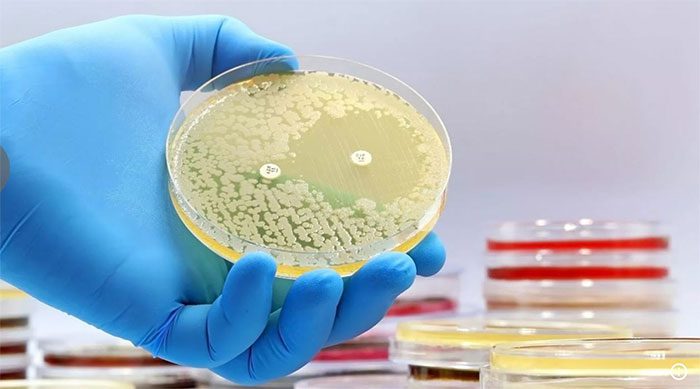A New Antibiotic Against Drug-Resistant Staphylococcus Aureus (MRSA) Discovered with AI Models.
The application of artificial intelligence (AI) is proving to be a game changer in medicine. This technology has helped scientists discover the first new antibiotics in over 60 years.
According to Euronews, the discovery of a new compound capable of killing drug-resistant bacteria—responsible for thousands of deaths worldwide each year—marks a turning point in the fight against antibiotic resistance.

For the first time in over 60 years, scientists have discovered a new antibiotic with the help of AI. (Image source: Canva).
James Collins, a Professor of Biological Engineering at the Massachusetts Institute of Technology (MIT), stated: “What’s important here is that we can see what the models are learning to predict which molecules will produce effective antibiotics. We present a framework that saves time, resources, and provides deep insights mechanically, from a chemical structure perspective, in ways we haven’t done before.”
Published in the journal Nature, this discovery is the result of a collaboration among a team of 21 researchers.
The research team employed deep learning models to predict the activity and toxicity of the new compound.
Deep learning involves using artificial neural networks to automatically learn and represent features from data without explicit programming.
It is increasingly applied in drug discovery to accelerate the identification of potential drugs, predict their properties, and optimize the drug development process.
In this case, the researchers focused on methicillin-resistant Staphylococcus aureus (MRSA).
MRSA infections can range from mild skin infections to more severe and potentially life-threatening conditions such as pneumonia and sepsis.
According to the European Centre for Disease Prevention and Control (ECDC), nearly 150,000 MRSA infections occur annually in the European Union. At the same time, around 35,000 people in this region die from infections caused by this drug-resistant bacterium.
The team of researchers at MIT trained an extensive deep learning model using expanded datasets.
To create the training data, approximately 39,000 compounds were evaluated for their antibiotic activity against MRSA. Both the obtained data and details about the chemical structures of the compounds were fed into the model.
To refine the selection of potential drugs, the researchers also employed three additional deep learning models. These models were trained to assess the toxicity of the compounds on three distinct types of human cells.
By integrating these toxicity predictions with previously identified antibacterial activity, the researchers accurately identified compounds capable of effectively combating bacteria with minimal harm to the human body.
Using this modeling approach, around 12 million compounds were screened. The models identified compounds from five different categories, classified based on specific chemical structures within the molecules, showing predicted activity against MRSA.
The researchers subsequently obtained approximately 280 compounds, which were tested against MRSA in laboratory settings. This approach led them to identify two “promising antibiotic candidates.”
In experiments involving two mouse models—one for MRSA skin infections and one for systemic MRSA infections—each of these compounds reduced the MRSA population by tenfold.


















































